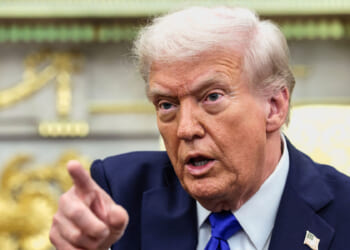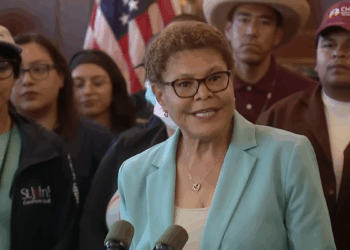For decades, America’s healthcare debate has centered on coverage, not cost. Politicians promise to “expand access” while ignoring the basic fact that millions of Americans cannot afford the medications that keep them alive. President Donald Trump’s new prescription-drug pricing initiative changes that equation entirely, delivering the most sweeping affordability reforms in modern healthcare history.
Under Trump’s “Most-Favored-Nation” agreements with pharmaceutical giants Eli Lilly and Novo Nordisk, the prices of essential medications will drop to levels not seen in decades. The new TrumpRx program ensures that Americans will pay no more than citizens in other advanced nations for the same drugs — ending a system that has long forced U.S. consumers to subsidize foreign markets.
Prices for leading medications like Ozempic and Wegovy — used to treat diabetes, obesity, and heart disease — will fall from $1,000 and $1,350 per month to about $350. For new or soon-to-be-approved treatments such as Zepbound and Orforglipron, the cost will average $346 per month. These reductions represent savings of over 100% for some households, bringing lifesaving therapies within reach for the first time.
Equally significant is Trump’s overhaul of Medicare and Medicaid pricing. Under his plan, Medicare will pay $245 for the major obesity and diabetes drugs — less than half the level proposed under the Biden administration. State Medicaid programs will receive access to those same low prices, while beneficiaries will pay just $50 out-of-pocket per month. That translates into billions in savings for taxpayers and families alike.
According to the Centers for Disease Control and Prevention, 40% of American adults are obese, raising their risk of heart disease, diabetes, and certain cancers. The economic toll of obesity-related illnesses exceeds $170 billion annually.
Yet for years, the treatments proven to combat these conditions were priced beyond reach. Trump’s reform directly confronts that failure by attacking the source of unaffordability rather than layering more subsidies on top of it.
The agreements extend well beyond obesity and diabetes medications. Eli Lilly will now provide Emgality, a migraine treatment, at $299 per pen — $443 below the list price — and Trulicity, another diabetes drug, at $389 per month — down $598. Novo Nordisk will offer its insulin products, such as NovoLog and Tresiba, for $35 per month.
For millions of Americans managing chronic conditions, these savings mean consistent treatment instead of skipped doses and worsening health.
But Trump’s plan addresses not only prices — it also tackles production. Both Eli Lilly and Novo Nordisk have pledged to invest heavily in U.S. manufacturing, with commitments of $27 billion and $10 billion, respectively. During the pandemic, America learned the danger of depending on foreign pharmaceutical supply chains.
Trump’s policy ensures that essential medicines are made in America by American workers, strengthening both public health and economic security.
In a system long dominated by lobbying and regulatory agencies, this approach represents a rare blend of moral clarity and fiscal responsibility. It protects patients without punishing innovation, fosters competition without government micromanagement, and restores a principle too often forgotten in Washington — that healthcare policy should serve citizens, not corporations.
By ensuring predictable domestic demand and fair competition, companies now have stronger incentives to develop and manufacture drugs in the United States rather than overseas. This is not bureaucratic price-fixing; it is market correction.
Every dollar Americans save on medicine is a dollar that can go toward rent, food, or family needs. For too long, the cost of survival has forced middle-class and low-income Americans to choose between prescriptions and necessities. Trump’s reforms begin to end that moral failure.
The success of this initiative could redefine healthcare for a generation. By making essential drugs affordable, reshoring production, and prioritizing patients over politics, President Trump has reframed the national conversation from “who pays for healthcare” to “why it costs so much in the first place.”
That shift — long overdue — marks the beginning of a more just, sustainable, and truly American healthcare system.
















